Have you spent days on end caring for your lawn only to spot unflattering yellowish-orange spots spoiling it? That right there is grass rust, a common disease that can affect your lawn from late summer to early fall. The first question that popped into my mind when I first noticed it in my yard was: how do I get rid of rust in my lawn?
Getting rid of lawn rust can be challenging. However, there are a few ways to prevent it, and fungicides can also help in some cases. Let’s see what grass rust is and how to deal with it.
Table of Contents
What Is Grass Rust?
Grass rust is a fungal disease affecting turf grasses when their growth is slowed. Because the disease is specific to turfs, it is also called lawn rust or lawn grass rust.
The rust reference comes from the aspect of the disease, which looks like rust dust on the grass blades. The spots can range in color from yellowish-orange to reddish or brown and are easy to remove from the blades with your fingers. At the same time, the turf loses its green color, acquiring a light yellow hue.
Similar to mushrooms, the fungus spores will mostly develop after cooler nights with heavy dew or frequent rainfall followed by warm and humid days. The blades coated with spores lose their ability to photosynthesize, weakening the grass and often stopping its growth.
Rust infestations are unlikely to kill your turf, but they will make it more susceptible to pests and other diseases. Thus, it is crucial to get rid of the fungus as quickly as possible.
Lawn Rust Signs and Symptoms
Identifying grass rust could seem easy, but the truth is that many other fungal diseases can cause yellowish or rusty discolorations on the grass blades. For this reason, you should know how to differentiate grass rust from other conditions before treating your lawn. Here are the most common signs and symptoms of grass rust:
- Check for irregular light-yellow patches on the lawn. The discoloration of each patch is more or less evenly distributed, and you can observe yellow spots on individual grass blades. As the disease progresses, the spots will grow in size and become darker in color.
- Rust spores look powdery, and they stick to your shoes or clothes as you’re walking. They can also cling to pets’ fur, but the disease is not harmful to animals.
- The grass coverage in the affected area becomes thinner and the blades break easily. However, the turf won’t be drying off completely.
6 Easy Ways for Getting Rid of Lawn Rust
1. Reduce irrigation
Rust fungus thrives in warm and moist environments, so reducing watering to only when it’s needed can help prevent the disease.
Drip irrigation is a better choice compared to the traditional sprinkler. Let the soil soak about six inches deep and only water once or twice a week. If drip irrigation is not an option, give your grass around 1-1.5 inches of water per week with the sprinkler.
As a rule of thumb, you should let the lawn surface dry completely between watering.
2. Change the irrigation schedule
As explained above, the rust spores develop in dewy conditions. This is why you should only water the lawn early in the morning, especially if you’re using a sprinkler.
If you water the turf in the morning, the droplets will have plenty of time to soak into the soil or evaporate before nightfall, making it harder for the fungus to grow.
However, you should only water the turf right after dawn. It is not recommended to irrigate when the sun is up because the droplets can act as a prism for the sun’s rays, increasing the risk of burning the blades. The only exception is drip irrigation.
Lawn Watering Tips
3. Nourish the lawn
Grass rust generally affects weaker grass during the dormant season; that’s why it is crucial to maintain your turf healthy and well-nourished.
One thing this fungus doesn’t like is nitrogen – a nutrient that turf grasses love. To minimize the risk of infections in late summer or fall, feed the lawn small amounts of nitrogen fertilizer throughout the growing season. You should apply about 0.2-0.5 pounds of nitrogen fertilizer per 1,000 square feet every six weeks.
The growing season can vary based on the type of grass you have, but you can usually fertilize from May to September if you have a warm season grass. For cool season varieties, you should fertilize from March to May and then again from September to November.
The only thing to pay attention to is the last fertilization of the season, which should be done at least six weeks before the dormant period begins. Too much growth toward the end of the season can leave the grass vulnerable to other diseases.
4. Mow regularly
Mowing is the most basic practice for maintaining your lawn healthy. However, you should follow certain rules to prevent damaging your turf.
All turf grasses are well-adapted to frequent mowing, but cutting them too short can reduce the vigor of the plant and its ability to turn nutrients into food. Mowing too low can also reduce the root system.
According to the latest standards, you should keep the grass between 2 and 3.75 inches tall. Higher cuts can help the grass tolerate more stress. At the same time, taller grass shades the soil, providing natural weed control.
5. Improve air circulation
Throughout the growing season, dead grass and clippings deposit onto the soil and turn into thatch. A moderate layer of organic material is beneficial, acting as protective mulch. However, if its thickness exceeds half an inch, it could suffocate your turf and create ideal conditions for grass rust to grow.
This is where dethatchers step in. To dethatch the lawn, you must first measure the thatch layer’s thickness. Simply cut several small sections out of the lawn and use a rule or measure tape to measure it.
You can then use a rake, manual dethatcher, or lawn aeration machine to remove excessive thatch and improve airflow. Tilling the ground before sowing the lawn can also help maintain the grass roots aerated and healthy.
6. Use fungicides
Although fungicides are not routinely used for preventing grass rust, they can help you get rid of the disease if you spot it early. You should only apply fungicide before the dormant season begins or on newly seeded lawns, and only at the first signs of infection.
If you live in a cool climate area, it would also help if you choose a type of grass that isn’t prone to rust. Perennial ryegrass, tall fescue, and Kentucky bluegrass are some of the cool season varieties most likely to be affected by rust.
Likewise, if you live in a warm climate area, you should steer clear of Zoysia or St. Augustine grasses.
Lawn Rust FAQ
Will lawn rust go away on its own?
Lawn rust can go away on its own if you intervene early and provide the turf with sufficient nutrients. Minimizing the shade areas in your yard can also help prevent the disease.
Does rust kill grass?
Rust doesn’t generally kill the grass. However, it may kill it if the turf is newly seeded or not strong enough to fight the disease.
When should I put fungicide on my lawn?
As explained, fungicide is not routinely used for combating lawn rust. However, if you decide to use it, you should apply the product in the evening on nights when the low temperatures rise to at least 60°F. You should only apply fungicide in the early stages of the disease and before the grass goes dormant for the winter.
For preventive applications, apply fungicide on warmer nights at intervals of 14 to 30 days.
Is lawn rust harmful to humans or animals?
No, lawn rust is not harmful to humans or animals.
Will lawn rust spread to other plants?
Lawn rust is related to rust diseases affecting other plants. However, the particular species involved – the Puccinia or Uromyces fungi – only affect turf grasses.
How can I prevent rust from spreading?
While there is no easy treatment for rust, you can prevent it from spreading following the quick tips below:
- Mow the lawn as soon as you spot the first yellow patches (grass rust spores will come off the blades if you brush them with your fingers, so the disease is easy to confirm). Try to remove as much of the infected patches as possible.
- Clean away all debris and don’t use these grass clippings for mulch.
- Apply fertilizer if you haven’t fertilized the lawn properly and switch to drip irrigation if possible. If you have to use a sprinkler, avoid watering the turf in the evening to keep moisture as low as possible during nighttime.
Summary
Grass rust is an eye-sore to look at and annoying to get rid of. However, proper lawn care can help you prevent it. The most important step is nutrition, so ensure that your turf gets enough nitrogen at the beginning and throughout the growing period.
Now, it’s down to you. Will you use a fungicide or try to get rid of it naturally? Have you dealt with lawn rust before and have other tips?
Tell us your thoughts in a comment below and share this article with your friends.

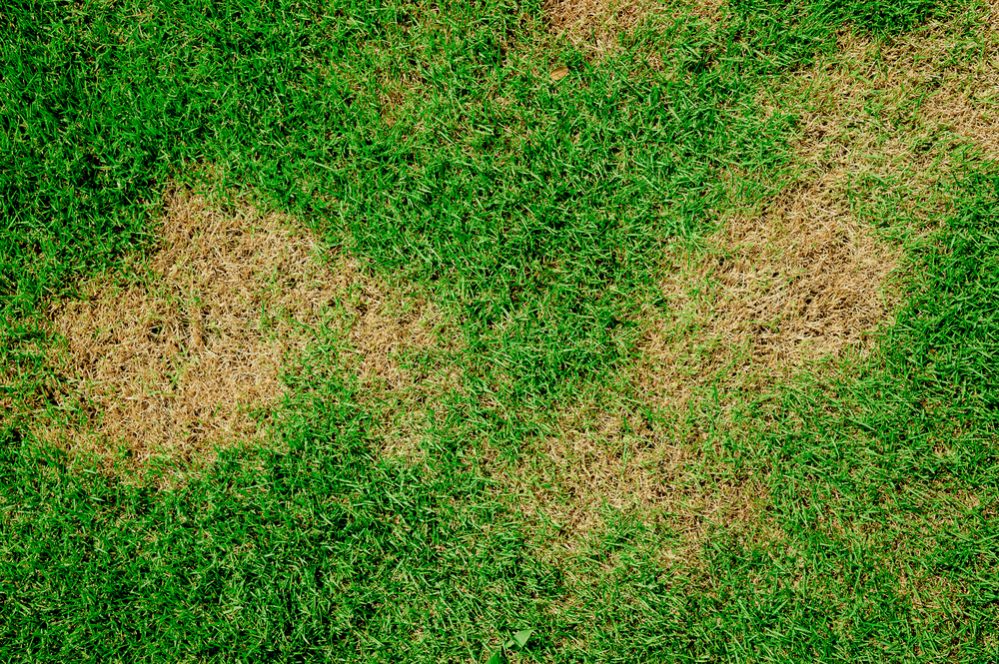
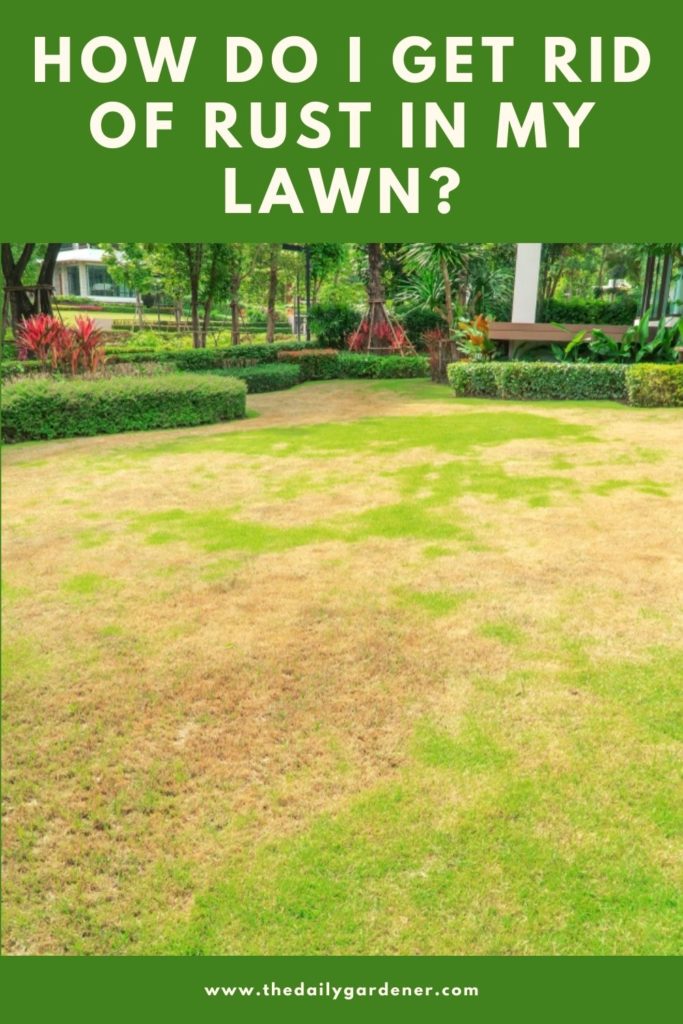
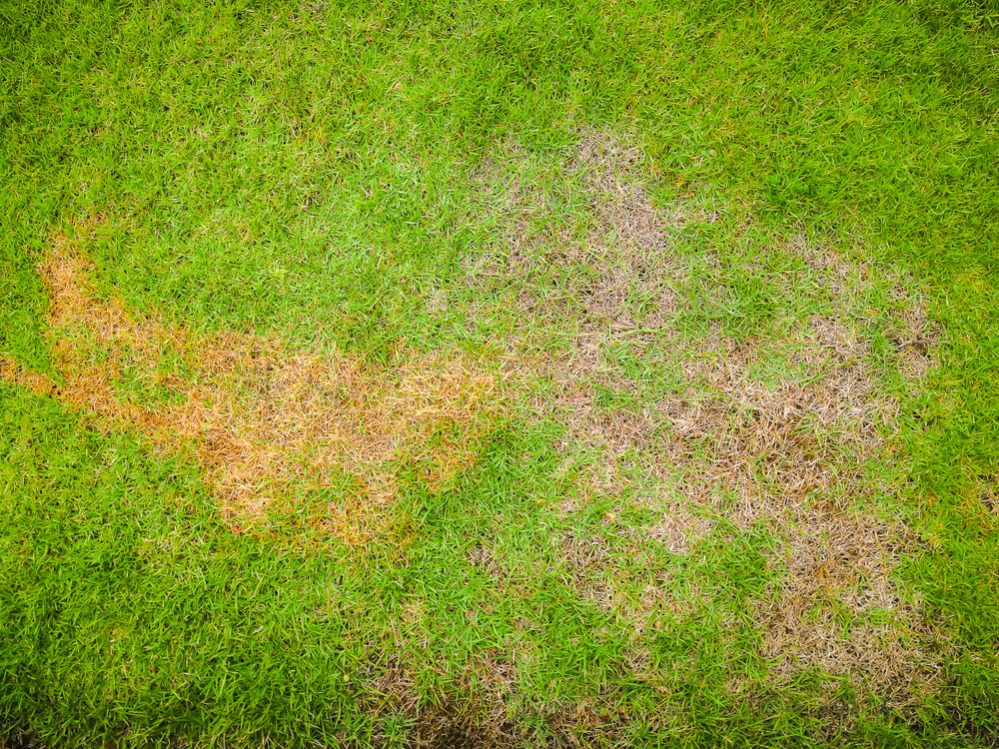
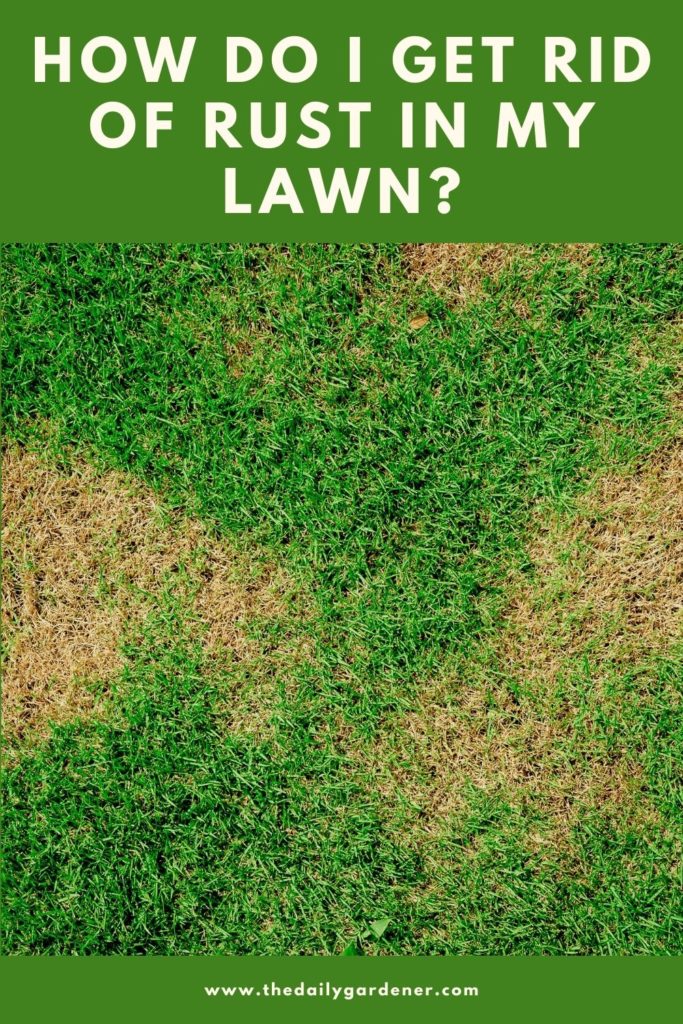
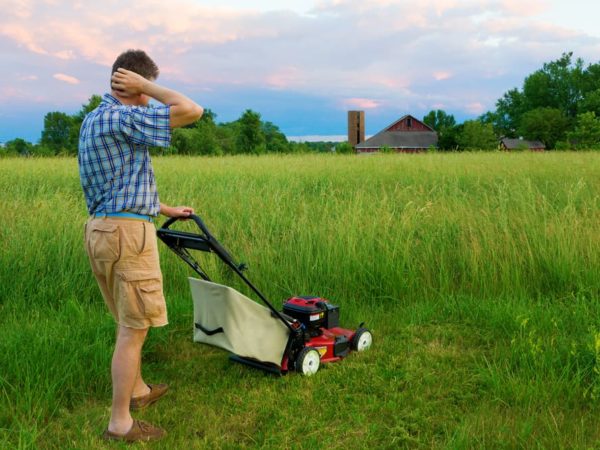
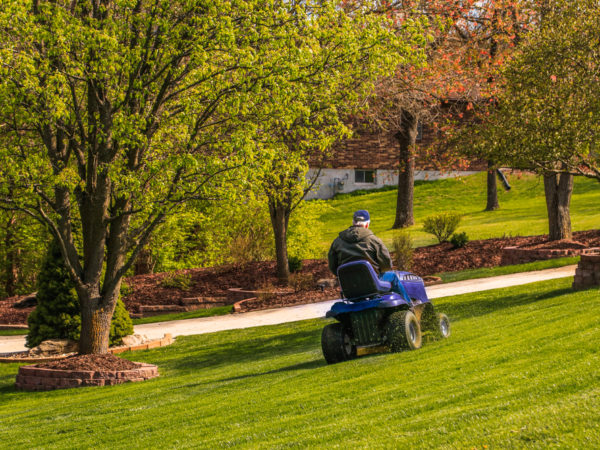
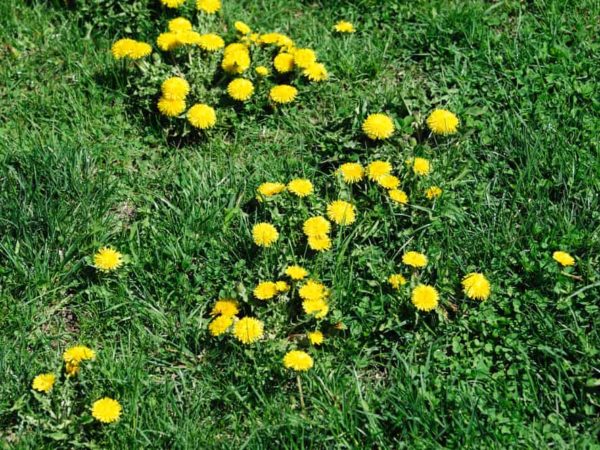
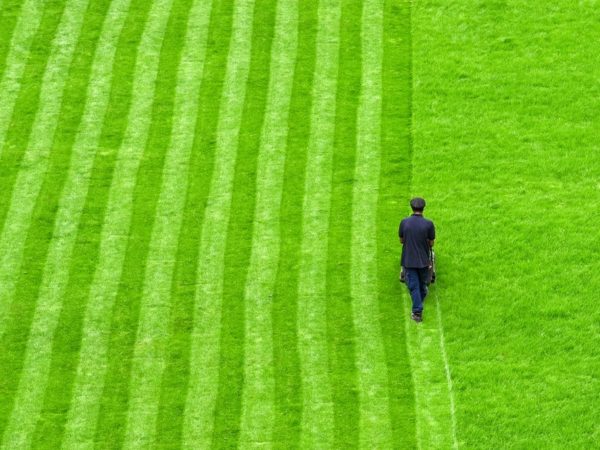
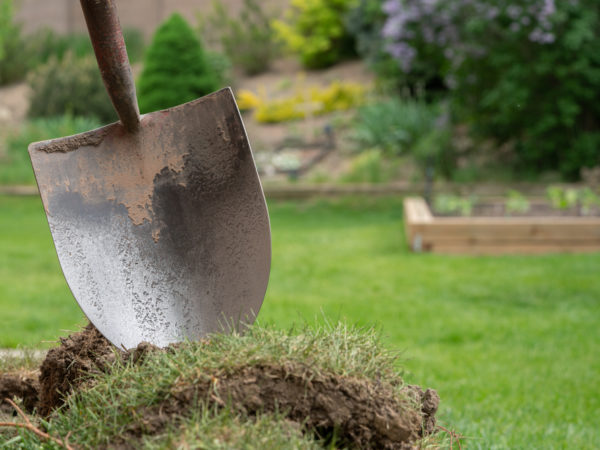
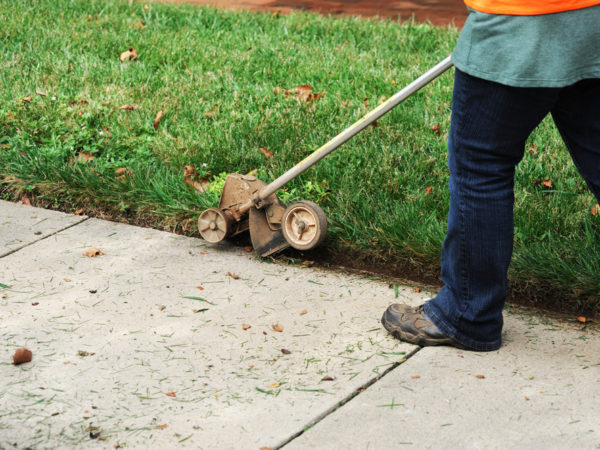
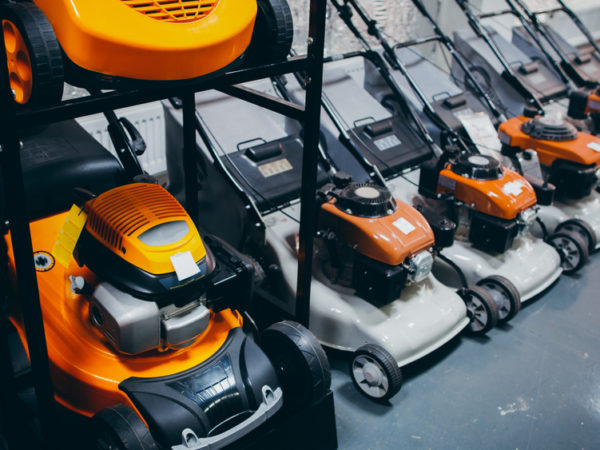
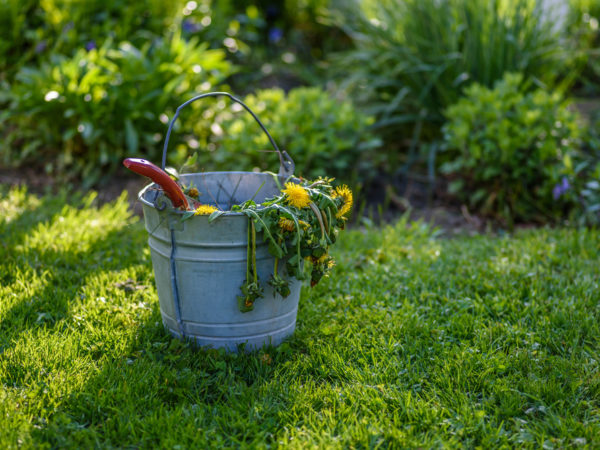
You say it is not harmful to animals but my dogs have an allergic reaction when this time of the year comes around August in Michigan. Its only this time when their feet break out with loosing hair and they are
itchy. When I get protection down and keep up with fertilizer, corn gluten etc. Then they have no problems. This is my experience and opinion.